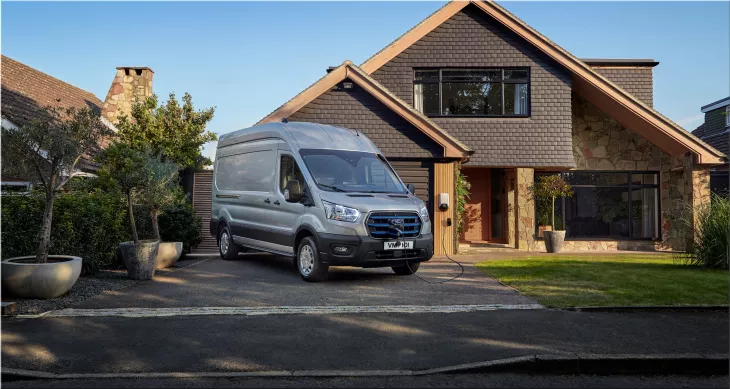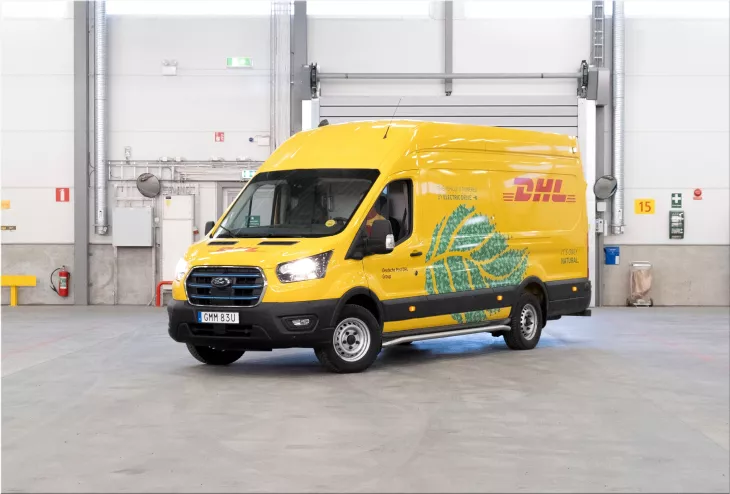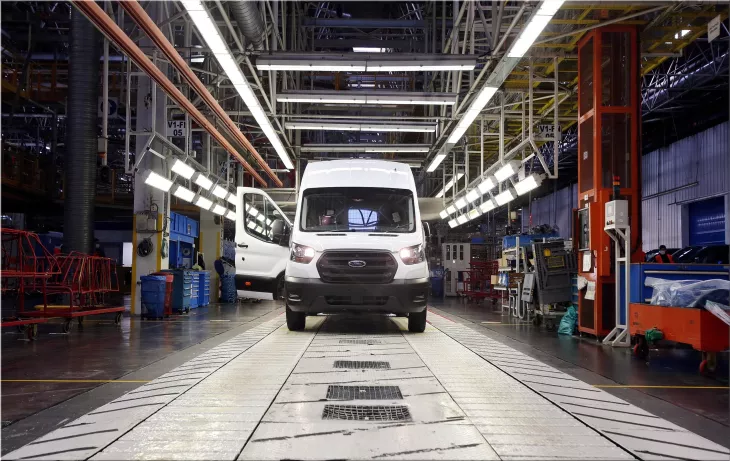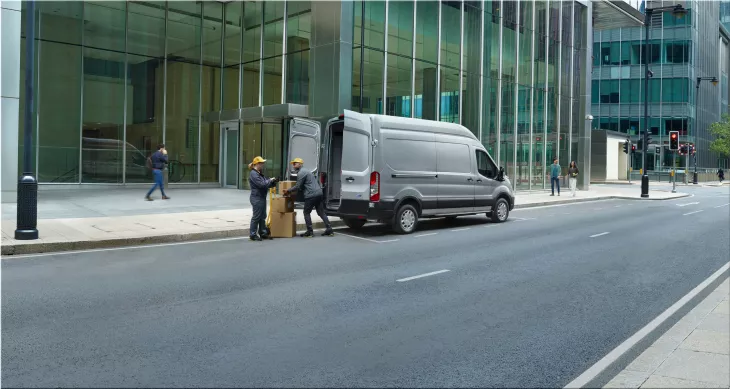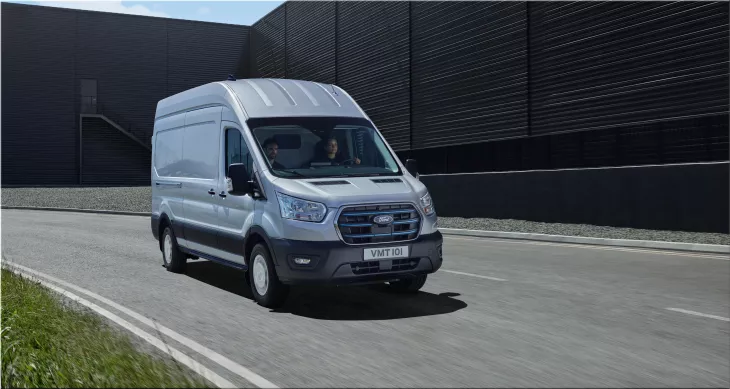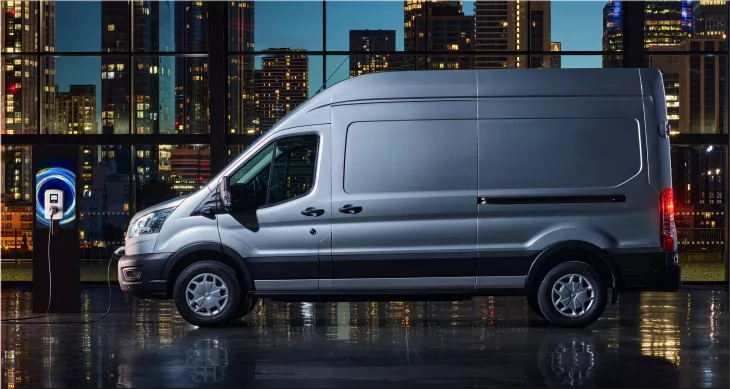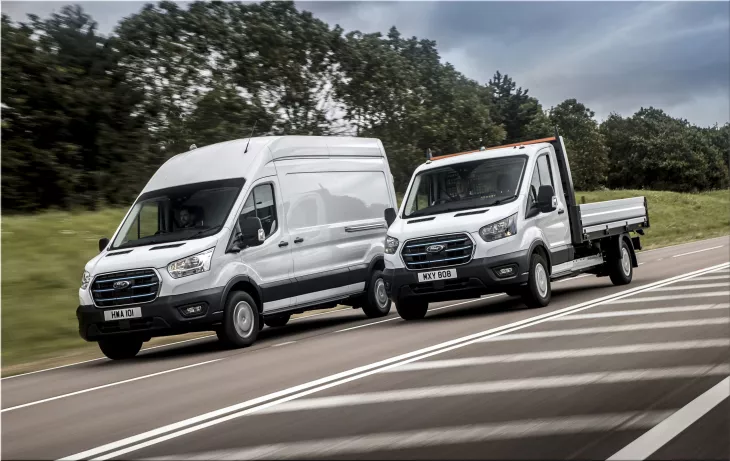The Ford E-Transit is the electric version of the popular Ford Transit van, which has been a leader in the commercial vehicle market for decades. The E-Transit aims to offer the same versatility, reliability, and functionality as its gasoline-powered counterpart but with the added benefits of lower operating costs, zero emissions, and advanced technology.
What’s New for 2024?
The Ford E-Transit was introduced in 2022 as one of the first electric commercial vehicles in the U.S. market. It is based on the same platform as the regular Transit but with a battery pack and an electric motor replacing the internal combustion engine and transmission.
For 2024, the E-Transit receives some minor updates, such as:
- A keyless entry and start system is now standard across the board
- Some models get updated headlamps with HID bulbs
- A new exterior color option: Velocity Blue
- A new interior trim option: Ebony cloth
Specifications and Performance
The 2024 Ford E-Transit uses a single permanent-magnet electric motor that delivers 266 horsepower and 317 lb-ft of torque. The motor is mounted on the rear axle and drives the rear wheels through a single-speed automatic transmission.
The E-Transit has a 67-kWh lithium-ion battery pack that provides an estimated range of 126 miles on a single charge. The battery pack is under the floor, which does not compromise the cargo space or the ground clearance of the van.
The E-Transit can be charged using a standard 120-volt outlet, a 240-volt Level 2 charger, or a DC fast charger. According to Ford, the E-Transit can replenish 30 miles of range in 10 minutes or 45 miles of range in 15 minutes using a 115-kW DC fast charger.
The E-Transit has a payload capacity of 3,330 to 3,880 pounds, depending on the configuration. The E-Transit is not rated for towing, unlike the regular Transit, which can tow up to 7,500 pounds.
The E-Transit has a top speed of 75 mph and can accelerate from 0 to 60 mph in about 8 seconds, according to Ford. The E-Transit also has a regenerative braking system that recovers energy and extends the range. The driver can choose between two modes of regenerative braking: one-pedal driving or blended braking.
The E-Transit has a revised suspension system that improves the handling and ride quality of the van. The E-Transit also has an electric power steering system that provides precise and responsive steering.
Year-to-Year Changes
The Ford E-Transit is a relatively new model, so there are not many changes to report from year to year. Here is a summary of the main changes since its debut:
- 2022: The E-Transit is introduced as a new model, available in three body lengths, three roof heights, and three configurations: cargo van, cutaway, and chassis cab.
- 2023: No major changes.
- 2024: A keyless entry and start system, updated headlamps, and new color and trim options are added.
Interior Technology, Luxury, and Comfort
The E-Transit’s interior is largely similar to the regular Transit’s, with a few differences. The most noticeable one is the 12-inch touchscreen that houses the Sync 4 infotainment system, which is exclusive to the electric model. The system supports wireless Apple CarPlay, Android Auto, and FordPass Connect, over-the-air updates, and cloud-based navigation. The E-Transit also features a 4.2-inch digital instrument cluster that displays information such as battery level, range, and driving modes.
The E-Transit electric van offers a range of options to customize the interior according to the needs of different businesses. For example, there are three types of seats available: vinyl, cloth, or leather. There are also various packages that add features such as cruise control, blind-spot monitoring, lane-keeping assist, and a 360-degree camera. The E-Transit also has a Pro Power Onboard system that provides up to 2.4 kW of power for tools and equipment.
The E-Transit’s primary function is to carry cargo, and Ford offers a variety of body styles and sizes to suit different purposes. The cargo van version has a maximum cargo volume of 487.3 cubic feet, which is slightly less than the regular Transit’s 487.8 cubic feet, due to the battery pack. The cutaway and chassis cab versions can be fitted with various aftermarket bodies, such as box trucks, ambulances, or motorhomes.
Safety and Reliability
The E-Transit has not been tested by the National Highway Traffic Safety Administration (NHTSA) or the Insurance Institute for Highway Safety (IIHS), so its crashworthiness is unknown. However, Ford claims that the E-Transit has been subjected to the same rigorous testing as the regular Transit and that a reinforced steel cage protects the battery pack.
The E-Transit comes with several standard safety features, such as automatic emergency braking, forward collision warning, post-collision braking, and a rearview camera. It also has optional features, such as adaptive cruise control, blind-spot monitoring, lane-keeping assist, and a 360-degree camera. The E-Transit also has a Co-Pilot360 system that can monitor driver fatigue and alertness, and provide coaching and feedback.
The E-Transit’s reliability is also unproven, as it is a relatively new model. However, Ford offers a generous warranty for the E-Transit, which covers the battery pack for eight years or 100,000 miles, whichever comes first. The E-Transit also has a lower maintenance cost than the regular Transit, as it has fewer moving parts and fluids to replace.
Warranties
The E-Transit has the following warranty coverage:
- Basic warranty: 3 years or 36,000 miles
- Powertrain warranty: 5 years or 60,000 miles
- Battery warranty: 8 years or 100,000 miles
- Roadside assistance: 5 years or 60,000 miles
2024 Ford E-Transit Versus Its Competitors
The E-Transit faces competition from other electric commercial vehicles, such as the Mercedes-Benz eSprinter, the Ram Promaster EV, and the Rivian R1T. Here is a comparison table of their key features and specs:
| Model | Price | Range | Power | Torque | Payload | Towing |
|---|---|---|---|---|---|---|
| Ford E-Transit | $48,090 | 126 miles | 266 hp | 317 lb-ft | 3,330-3,880 lbs | N/A |
| Mercedes-Benz eSprinter | $69,000 | 200 miles | 201 hp | 267 lb-ft | 3,000-3,500 lbs | N/A |
| Ram Promaster EV | TBA | TBA | TBA | TBA | TBA | TBA |
| Rivian R1T | $67,500 | 300+ miles | 754 hp | 829 lb-ft | 1,760 lbs | 11,000 lbs |
As the table shows, the E-Transit has the lowest price and the highest payload capacity among its rivals but also the lowest range and power. The eSprinter offers a longer range and a similar power output, but it is much more expensive and has a lower payload capacity. The Promaster EV is still in development, so its specs are unknown, but it is expected to be a strong contender in the segment. The Rivian R1T is a different type of vehicle, as it is a pickup truck rather than a van, but it offers impressive performance, range, and towing capacity, as well as versatile bed and storage options.
How Much The 2024 Ford E-Transit Costs
The 2024 Ford E-Transit has a starting price of $48,090, which is $9,000 more than the regular Transit. The price varies depending on the body style, length, and roof height. Here is a breakdown of the prices for each configuration:
| Configuration | Price |
|---|---|
| Cargo Van Low Roof Regular Wheelbase | $48,090 |
| Cargo Van Low Roof Long Wheelbase | $49,090 |
| Cargo Van Medium Roof Regular Wheelbase | $49,590 |
| Cargo Van Medium Roof Long Wheelbase | $50,590 |
| Cargo Van High Roof Long Wheelbase | $51,590 |
| Cargo Van High Roof Extended Wheelbase | $53,585 |
| Cutaway Low Roof Regular Wheelbase | $48,090 |
| Cutaway Low Roof Long Wheelbase | $49,090 |
Is It Worth Buying the Ford E-Transit?
The Ford E-Transit is a compelling option for businesses that want to reduce their environmental impact and save money on fuel and maintenance. The E-Transit offers a lot of flexibility and customization, as well as a decent range and performance. The E-Transit also comes with a generous warranty and a range of safety and technology features.
However, the E-Transit is not without its drawbacks. The E-Transit is more expensive than the regular Transit, and it has a lower range and power than some of its competitors. The E-Transit also cannot tow anything, unlike the regular Transit, which can tow up to 7,500 pounds. The E-Transit also depends on the availability and accessibility of charging stations, which may not be as widespread or convenient as gas stations.
Ultimately, the decision to buy the Ford E-Transit depends on each business's specific needs and preferences. The E-Transit may be a good fit for those who operate in urban areas, have predictable routes, and value sustainability and efficiency. The E-Transit may not be a good fit for those who need more range, power, and towing capability or travel in remote or rural areas. The E-Transit is a promising electric commercial vehicle but not a one-size-fits-all solution.





